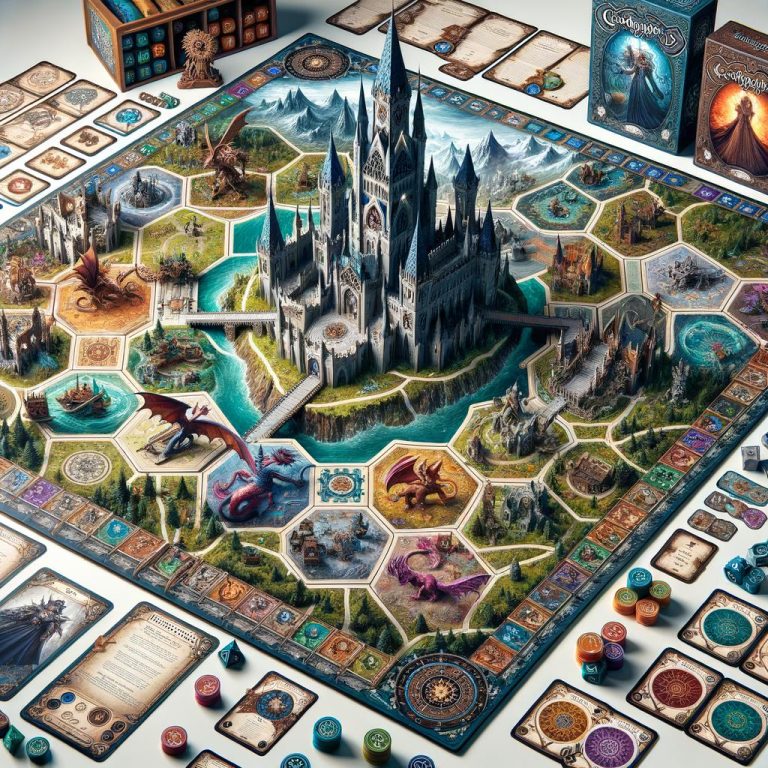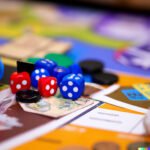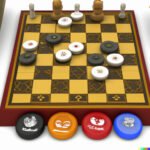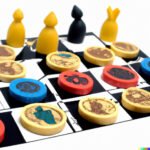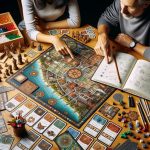Do you have a passion for strategy board games and a creative spark that drives you to design your own games? Have you ever considered bringing your game ideas to life by creating a strategy board game from scratch?
In this article, we will delve into the exciting world of designing and crafting your very own strategy board game. Whether you’re a seasoned tabletop gamer or new to the world of board games, this guide will provide you with valuable insights and practical tips on how to make your own strategy board game.
Creating your own strategy board game offers a unique opportunity to unleash your creativity, exercise strategic thinking, and share an interactive experience with friends and family. By designing a game tailored to your preferences and gameplay style, you can personalize every aspect of the game – from theme and mechanics to components and artwork. The process of making your own strategy board game is not only rewarding but also provides an avenue for self-expression and innovation.
From brainstorming the initial concept to playtesting the final prototype, each step in the journey of creating a strategy board game presents its challenges and rewards. Through careful planning, meticulous design, and diligent testing, you can craft a unique gaming experience that reflects your vision and captures the interest of players.
In the following sections, we will explore the different facets of developing your own strategy board game – from choosing materials to marketing strategies – empowering you to turn your creative ideas into a tangible reality.
Why Make Your Own Strategy Board Game
Creating your own strategy board game can be a rewarding and fulfilling experience for many reasons. Whether you are a seasoned gamer looking to put your ideas into action or a beginner wanting to explore your creative side, making your own game offers numerous benefits.
One of the main advantages is the opportunity to unleash your imagination and bring your unique vision to life. Designing and developing a strategy board game allows you to express yourself creatively, from crafting compelling gameplay mechanics to designing intricate storylines.
Another reason to make your own strategy board game is the sense of accomplishment that comes with seeing your creation come to fruition. Building a game from scratch involves a variety of skills, such as problem-solving, critical thinking, and even some artistic abilities.
As you work through the process of planning, designing, and playtesting your game, you will undoubtedly learn new things and overcome challenges along the way. This sense of achievement can be incredibly satisfying and motivating, pushing you to continue honing your craft and creating more games in the future.
Furthermore, making your own strategy board game provides an excellent opportunity for social interaction and bonding with others. Whether you choose to playtest with friends and family or showcase your finished game at gaming events or conventions, sharing your creation with others can be both exciting and fulfilling.
Not only does it allow you to receive valuable feedback on your game design, but it also enables you to connect with fellow gamers who share your passion for tabletop gaming. The collaborative aspect of game development can strengthen relationships and create memorable experiences for everyone involved.
- Unleash Your Imagination
- Sense of Accomplishment
- Social Interaction
Planning Your Game Concept
Creating your own strategy board game offers a unique opportunity to let your creativity shine and bring your vision to life. One of the key steps in this process is planning out your game concept from the theme to the game mechanics. By carefully considering these elements, you can ensure that your game is not only fun to play but also engaging for players of all ages.
Choosing a Theme
When starting to plan your board game, think about what theme or setting you want to explore. Whether it’s fantasy, historical, sci-fi, or something entirely unique, the theme will set the tone for the entire game. Consider themes that resonate with you personally or that you believe will capture the interest of potential players.
Developing Game Mechanics
Once you have a theme in mind, it’s time to think about the mechanics of your game. This includes how players will interact with each other, how they will progress through the game, and what strategies they can employ to win. Will your game involve resource management, tactical combat, or puzzle-solving? Take inspiration from existing board games but don’t be afraid to innovate and come up with new mechanics that suit your theme and player preferences.
Balancing Theme and Mechanics
A successful strategy board game strikes a balance between its theme and mechanics. The theme should enhance and support the gameplay experience while the mechanics should be intuitive and engaging for players.
Keep refining and testing your ideas to ensure that both aspects work harmoniously together in creating an immersive and enjoyable gaming experience for everyone involved. By carefully planning your game concept from theme to mechanics, you can lay a strong foundation for creating a strategy board game that stands out in today’s market.
Materials Needed for Creating a Strategy Board Game
When setting out to make your own strategy board game, having the right materials is essential to bring your game to life. Whether you are a seasoned game designer or a novice looking to unleash your creativity, having a comprehensive list of supplies will ensure a smooth and successful game-making process.
Board Game Prototype Materials
To start creating your strategy board game, you will need basic prototype materials such as a large sheet of poster board or foam core for the game board itself. Additionally, you will need various colored markers, pens, and pencils for sketching out your initial design ideas. Cardstock paper is essential for creating cards and other game components that need to be durable yet flexible.
Game Components and Accessories
It’s crucial to have a variety of game components on hand when crafting your strategy board game. This includes dice or spinners for randomization, player pieces or tokens to move around the board, and resource markers or counters for tracking points or progress. Depending on the theme of your game, you may also want to include themed accessories such as miniatures or custom-shaped pieces.
Crafting Tools and Supplies
In addition to the basic prototype materials and game components, having crafting tools and supplies handy can greatly aid in the creation process. Scissors, glue, tape, rulers, cutting mats, and X-Acto knives are all essential tools for cutting out pieces accurately and assembling them securely.
Investing in quality materials and tools will not only elevate the look of your final product but also make the creation process more enjoyable and efficient. By gathering these materials needed for creating a strategy board game, you are setting yourself up for success in bringing your gaming ideas to fruition.
Designing the Game Board
There are several key factors to keep in mind when designing your game board. First, think about the layout of the board and how it will impact gameplay. Consider how spaces are connected, where players will start, and any special areas or features that may affect gameplay.
Additionally, pay attention to the visual design of the board. Choose a theme or style that complements the overall concept of your game and use colors, illustrations, and symbols to create a cohesive and engaging visual experience.
To create a visually appealing board, you can use a variety of techniques and tools. Experiment with different design software or hand-drawn sketches to map out your board layout. Consider adding textures, patterns, or other visual elements to make your board more dynamic and interesting.
You can also incorporate 3D elements or interactive components to add depth and tactile appeal to your game board. Remember that the design of your game board should not only look great but also contribute to the strategic decisions and experiences players will have as they navigate through your game.
Crafting Game Pieces and Cards
When making custom game pieces, consider the theme and mechanics of your board game. Are you creating a medieval-themed strategy game? Then your pieces could be knights, castles, and dragons. Or perhaps you are developing a space exploration game where your pieces could be rockets, planets, and aliens. The key is to tie in the design of your pieces with the overall concept of your game to create a cohesive and immersive experience for players.
To craft game pieces and cards, start by sketching out your designs on paper to visualize how they will look on the board. Once you are satisfied with your designs, gather all necessary materials such as cardstock, markers, colored paper, scissors, glue, and any other decorative elements you may need.
Take your time cutting out each piece carefully and assembling them with precision to ensure a professional finish. Remember that attention to detail is key in making custom game pieces that not only look great but also enhance gameplay for everyone involved.
| Game Pieces | Cards |
|---|---|
| Consider theme & mechanics | Sketch out designs |
| Gather materials needed | Use cardstock & markers |
| Cut out carefully & assemble | Attention to detail is key |
Testing and Playtesting Your Game
Testing and playtesting your own strategy board game is a crucial step in the game development process. It allows you to identify any potential issues with the game mechanics, balance, or rules before finalizing your creation. By engaging in rigorous testing, you can ensure that your game provides an enjoyable and challenging experience for players of all skill levels.
To effectively test your strategy board game, consider the following methods:
- Solo Playtesting: Play through the game on your own to get a sense of how it functions without any external input.
- Peer Playtesting: Invite friends, family members, or fellow game enthusiasts to playtest the game with you. Observe their reactions, feedback, and suggestions for improvement.
- Blind Playtesting: Have individuals who are unfamiliar with the game try it out without any guidance from you. This will give you valuable insights into how intuitive and understandable your game is to new players.
Remember that playtesting is not just about identifying problems but also about refining and enhancing your game based on player feedback. Be open to making changes to improve the gameplay experience and make adjustments as needed.
In addition to testing your strategy board game yourself, consider participating in local gaming events or conventions where you can showcase your creation to a wider audience. Gathering feedback from a diverse group of players can help you fine-tune your game further and increase its appeal to a broader demographic. By investing time and effort into testing and playtesting your strategy board game, you can enhance its quality and increase its chances of success in the market.
Marketing and Selling Your Strategy Board Game
The process of creating your own strategy board game can be a rewarding and fulfilling experience, but part of the fun is also getting to share your creation with others. Marketing and selling your strategy board game allows you to introduce your game to a wider audience and potentially even turn your hobby into a business opportunity.
There are several strategies you can employ to effectively market and sell your game, whether it’s through online platforms or in-person events.
One key strategy for marketing your strategy board game is to establish a strong online presence. Creating a website or social media profiles dedicated to your game can help generate buzz and attract potential players.
You can share updates on the development process, behind-the-scenes glimpses, and even run promotional campaigns to build anticipation for the launch of your game. Utilizing platforms like Kickstarter or Indiegogo can also help you raise funds for production while gauging interest from the gaming community.
In addition to online marketing efforts, participating in conventions, trade shows, and local gaming events can be an effective way to showcase your strategy board game in person. Setting up a booth or table where attendees can try out your game firsthand can spark interest and create word-of-mouth buzz.
Offering demos, hosting tournaments, or providing exclusive incentives for those who purchase the game at the event can help drive sales and expand your reach within the gaming community. By actively engaging with players and seeking feedback, you can cultivate a loyal fan base for your strategy board game.
| Marketing Strategies | Sales Strategies |
|---|---|
| Establishing an online presence through website and social media | Participating in conventions, trade shows, and gaming events |
| Utilizing crowdfunding platforms like Kickstarter | Offering demos and hosting tournaments |
| Running promotional campaigns to build anticipation | Providing exclusive incentives for purchasers |
Conclusion
Creating your own strategy board game can be a rewarding and fulfilling experience. From coming up with a unique concept to bringing that vision to life through design and gameplay, the process is filled with opportunities for creativity and innovation. By making your own game, you have the freedom to tailor every aspect to your liking, ensuring that it reflects your personality and preferences.
One of the most exciting aspects of creating your own strategy board game is the chance to share it with others. Whether you playtest with friends and family or showcase your game at events and conventions, seeing others enjoy and engage with something you’ve created can be incredibly gratifying. Additionally, by marketing and selling your game, you have the opportunity to reach a wider audience and potentially turn your passion project into a successful venture.
In conclusion, making your own strategy board game is not only a fun and enjoyable process but also a way to express yourself creatively and connect with others through shared experiences. The sense of accomplishment that comes from seeing your game come to life on the tabletop is unparalleled.
So why not embark on this journey of game creation? Take the first step in planning your concept, gather your materials, design your board, craft your pieces, test your game, market it, and watch as others enjoy playing the strategic world you’ve brought into existence.
Frequently Asked Questions
How Do I Create My Own Board Game?
Creating your own board game can be a fun and rewarding experience. Start by coming up with a unique theme or concept for your game. Then, design the board layout, rules, and components such as cards or tokens.
Playtest your game with friends and make adjustments based on their feedback. Consider using online resources for creating professional-looking components like cards or boards.
How to Design a Strategy Game?
Designing a strategy game requires careful planning and balance. Begin by determining the goal of the game and the mechanics that will drive strategic decision-making. Create different paths to victory to keep players engaged.
Focus on providing meaningful choices for players to make throughout the game. Playtest extensively to ensure that the strategy elements are well-balanced and enjoyable for all types of players.
What Board Games Can You Make Yourself?
There are endless possibilities when it comes to creating your own board games at home. Some popular DIY board game ideas include creating custom versions of classic games like Monopoly or Scrabble with personalized themes, rules, or artwork. You can also invent completely new games from scratch based on your interests and creativity.
Materials like cardboard, paper, dice, tokens, and markers are great starting points for crafting homemade board games. Remember to have fun experimenting with different ideas!

I love playing all kinds of games – from classics like Monopoly to modern favourites like Ticket to Ride.
I created this blog as a way to share my love of board games with others, and provide information on the latest releases and news in the industry.

